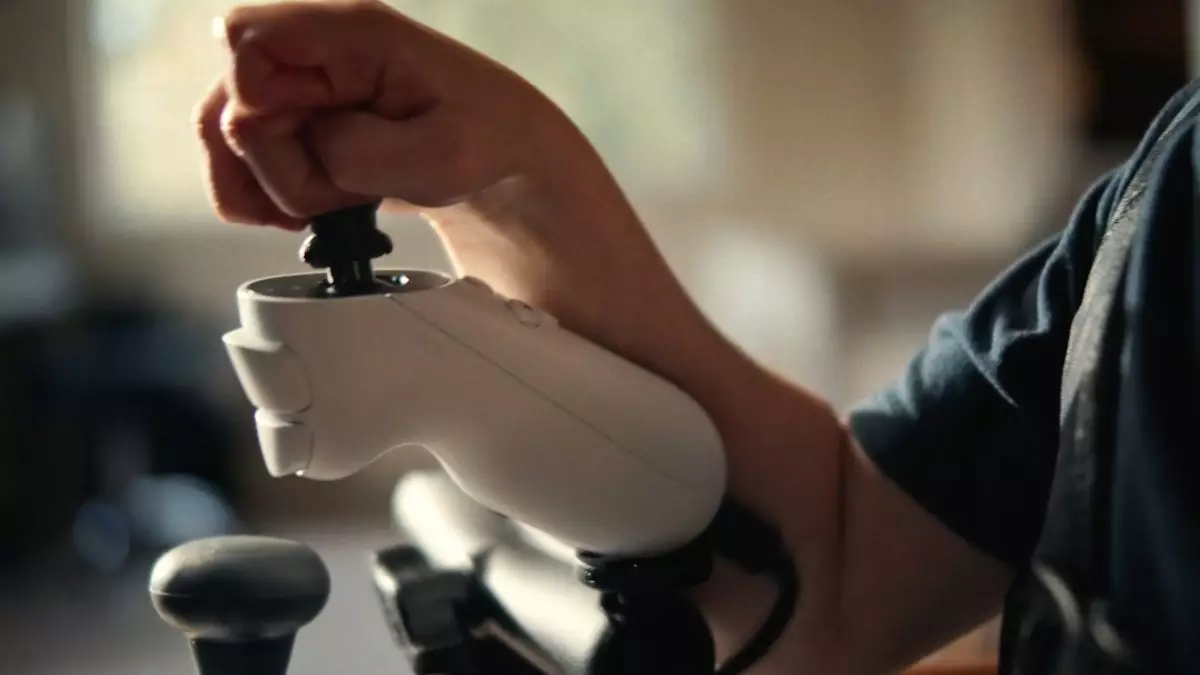The world of gaming is often perceived as a domain that rewards commitment—not just in terms of time but also financially. High-quality gaming experiences frequently require investments in pricey consoles or advanced PCs, which can isolate segments of the population. However, in a remarkable pivot towards inclusiveness, Microsoft has stepped onto the scene with their latest innovation: the Xbox Adaptive Joystick. This product is more than just a controller; it represents a significant movement toward making gaming accessible to players who face mobility challenges.
The adaptive joystick was revealed at the Microsoft Ability Summit, a gathering focused on tech and accessibility, positioning Microsoft as a leader in the quest for inclusive gaming. While many companies may view accessibility only as a secondary concern, Microsoft actively integrates it into their design philosophy. By creating equipment specifically tailored for players with unique needs, the company not only meets a market demand but also fosters a culture of belonging.
A Tool for Everyone
Weighing in at just 106 grams and priced affordably at $30, the Xbox Adaptive Joystick aims to stand apart from the expensive, specialized gear typically associated with high-end gaming. The design features a simple, baton-shaped structure that facilitates single-handed operation, or use with non-hand body parts, effectively expanding its usability. Such design considerations allow for extensive remapping options, letting players tailor configurations to suit their physical abilities.
While the joystick itself can be easily integrated with a variety of setups, those seeking further customization will need to visit the Xbox Design Lab for unique toppers. However, this necessitates an additional step: having the topper 3D printed elsewhere, which can be seen as a hurdle rather than a convenience. The approach to customization raises an important question regarding accessibility; ensuring that all players, regardless of their circumstances, can truly personalize their gaming experience is crucial for this technology to fulfill its intended purpose.
The Tech Dilemma: Manageable or Unstable?
One notable aspect of this innovation is how button remapping and configuration rely heavily on the Xbox Accessories app. While modern technology promises convenience, it also introduces uncertainties. The long-term sustainability of an app-based system raises legitimate concerns. If the app were to lose support or become obsolete, players could find themselves at a crossroads, unable to utilize their hard-earned and expensive equipment.
Such implications should not detract from the positive acknowledgment of the effort and thought put into the design, but they do pose a critical consideration for dedicated players and advocates for accessibility. Will Microsoft prioritize these adaptive technologies consistently, or will they eventually cast them aside in a rapidly evolving landscape where technology can sometimes move too fast for responsible support?
A Positive Step Forward
Despite these concerns, it’s impossible to ignore the significant strides Microsoft is making toward inclusivity within the gaming community. The design of the Adaptive Joystick, which allows it to work seamlessly with the established Xbox Adaptive Controller, indicates a thoughtful approach to hardware compatibility, ensuring that these adaptive tools are not siloed but rather integrated into the larger gaming ecosystem.
What remains vital is for Microsoft to persist in listening to the diverse voices within the gaming community. Their commitment to creating accessible technology is reflected in their blog posts and initiative outlines, which reiterate a dedication to enhancing gaming for all players. Encouragingly, this initiative seems far from a mere marketing gimmick; it is a reflection of an emerging belief that gaming should be a universal experience, not dictated by who can afford the best equipment.
Looking to the Future of Gaming
Microsoft’s move to champion inclusivity through their adaptive technology program builds a hopeful narrative for the future of gaming. Initiatives like the Xbox Adaptive Joystick represent an opportunity not only for disabled gamers but also for society to re-evaluate perceptions of accessibility and engagement within hobbies traditionally deemed exclusionary. The landscape is changing, and it is one that can embrace a range of players, paving the way for a more diverse and inclusive gaming world. The journey is ongoing, but with products like the Adaptive Joystick, hope shines brightly as innovation meets determination in pursuit of a space where all can play.

